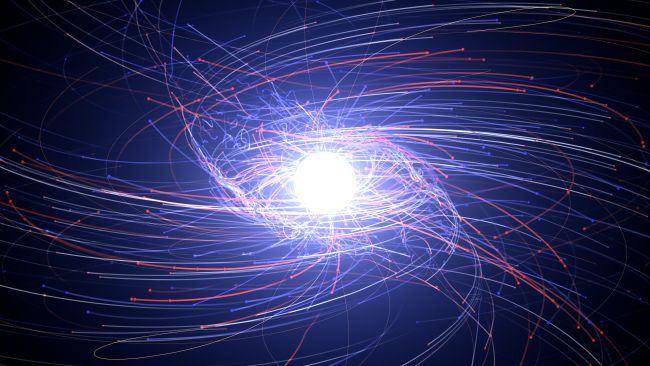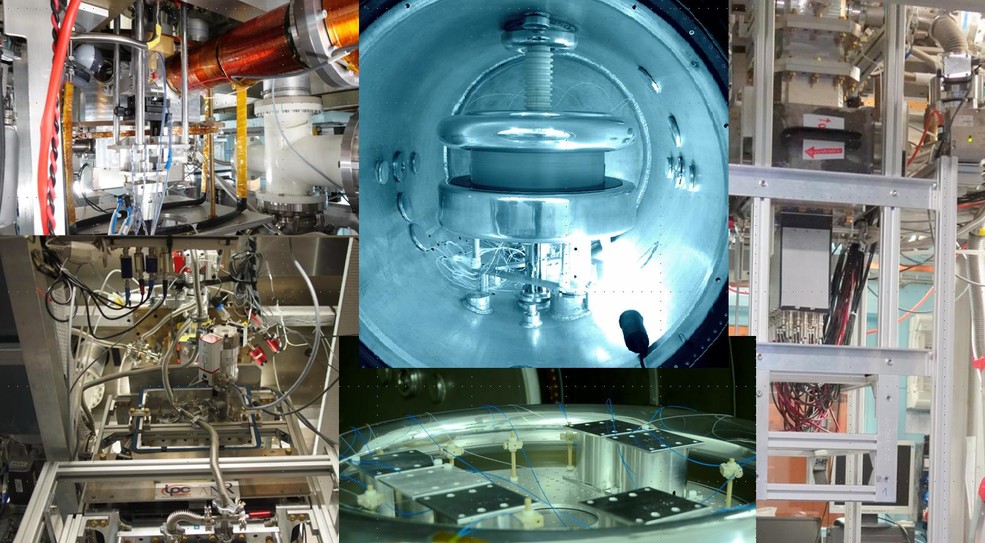
Based on the Standard Model of particle physics, an equal number of matter and antimatter particles formed in the Big Bang. Since each matter particle has an associated antiparticle, they clash at some point over the course of billion years since the Big Bang, leading to annihilation, i.e. mutual destruction. Pure energy would be released in the form of electromagnetic radiation and the whole universe together with the Earth would never have been created. However, this explanation obviously does not depict our reality. A bit more energy must have been created in the Big Bang. How this imbalance occurred is an issue that has perplexed physicists for decades.
One of the possible answers must be hiding in a neutron, which is a neutral particle by its nature but comprising of charged quarks. Ever since the middle of the last century, physicists have been trying to discover whether the distribution of positively and negatively charged quarks is centred in a neutron or not. If not, then there exists an electric dipole moment of the neutron (nEDM), meaning that basic symmetries in particle physics are violated which further leads to the asymmetry of the equal mass of matter and antimatter after the Big Bang. Therefore the measurement of nEDM is nowadays one of the most important tasks of physics. Currently, one of the most successful experiments is being carried out under the auspices of an international nEDM collaboration seated in Switzerland, whose full member since 2018 has been the Institute of Physics, Belgrade. This collaboration has recently come closer than ever before to the necessary answer and the results of measurement were published in March 2020 in the prestigious journal Physical Review Letters.
The experiment began in the south-east of France, in Grenoble, but later Swiss researchers took over the apparatus and moved the whole experiment to the Swiss state Paul Scherrer Institute where they continued to search for dipole moment of the neutron in order to solve the enigma of the universe. Years of project improvement and development have followed. The source of ultracold neutrons has been indispensable. They were produced in a nuclear reactor in Grenoble, while in Switzerland one of the strongest sources of protons is in use, which, beside these types of research, has also found its application in medicine, so it is used in cancer therapies.
Dr Zoran Grujić of the Institute of Physics, Belgrade was on post-doctoral studies in the period 2011-2018 in the group of Professor Antoine Weis at the Department of Physics, Université de Fribourg, Switzerland. After Professor Weis had retired, Dr Grujić returned to the Institute of Physics, Belgrade where he still works in the Photonics Centre and continues to cooperate with the nEDM collaboration, which rendered the Institute its full member.
The team of Professor Weis was in charge of the development of new technologies of magnetometry, which is still Dr Grujić’s interest. As he said, having developed one type of magnetometer and realized that its accuracy was not good, they started developing a new version that had a smaller, but still significant, problem with accuracy. ‘My task was to make a magnetometer as precise as possible, using cells with antirelaxation coating layer in which caesium vapour is at room temperature’, stated Dr Grujić. He further explained that laser spectroscopy of caesium vapour measures Zeeman Effect of the energy of the basic atomic level, based on which the strength of the magnetic field at that place is determined. A series of spatially distributed cells denotes magnetic field distribution in an experimental volume which enables the correction of the homogeneity of the magnetic field before measuring the electric moment of the neutron. The accuracy of each magnetometer determines how accurate the final measurement result will be.
A new paper, published in the journal Physical Review Letters is signed by more than 80 authors from 18 institutions members of the collaboration and located in eight states. This work presents the nEDM latest value showing that this violation is less than (1.1stat+0.2sys)x 10-26 e cm, which means that the distance between positive and negative charges within neutrons is certainly less than 1.3 x 10-26 cm.
In an interview on the latest discovery, Professor Weis explained that a neutron, although neutral, consists of positively and negatively charged quarks and that the existence of electric dipole moment would mean that separation of charge is distributed so that in the north pole of neutron there is a small excess of positive charge while in the south pole there is a small excess of negative charge. It is this separation of charge that is being measured by this experiment. Dr Grujić also elaborates that ‘the value of nEDM is equivalent to zero with a certain accuracy’. As he said, a manner to directly measure this property of a neutron with sufficient accuracy has not yet been discovered, but the measurement is numerously repeated, and the average value of the measurement is presented as a result, which statistically reduces its error.
If the value of nEDM was determined more precisely, the theories which oppose it could be refuted. ‘Every time new results are unveiled, the error is reduced and some theories would founder’ said Dr Grujić. How tiny the electric dipole moment of the neutron is, vividly is presented by a comparison on the official site of the Paul Scherrer Institute: if the neutron was to be the size of the Earth, the distortion between the positive and negative charge would be less than a tenth of the thickness of a human hair.
The measurements are at the time suspended due to the construction of the new experiment which is expected to start working in 2021. The measurement process is expected to be boosted by two times with a more qualitative control of the magnetic field. Meanwhile, Dr Grujić and his colleagues from the collaboration continue to work on its improvement, and the nEDM collaboration meeting is scheduled to take place in Belgrade, in November.

Original paper in the journal Physical Review Letters: Measurement of the Permanent Electric Dipole Moment of the Neutron
Photos: NASA’s Goddard Space Flight Center and nEDM colaboration




